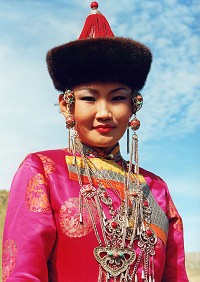| Origin & Development | |
|
Legends & Fairy tales • Earth's Crust Thickness • Underwater Relief • Landscapes • History & Formation • Seismic Activity • | |
| History of Lake Baikal | |
|
History of Explorations • Inhabitants & Settlers • First maps of Baikal • Archaeological Sites • | |
| Lake Baikal Climate | |
|
Introduction • Fogs • Winds & Waves • Ice Conditions • | |
| Fauna & Vegetation | |
|
Mammals • Baikal seal - Nerpa • Ichthyofauna • Invertebrates • Vegetation • | |
| Water of Lake Baikal | |
|
Colour • Transparency • Temperature • Pressure • Depth • Currents • Budget • Chemical Composition • Pollution • | |
| Recreational Areas | |
|
Circumbaikal Railway • Peschanaya Bays • Olkhon Island • Chivirkuysky Gulf • Wooden Irkutsk • Trans-Siberian Railway • | |
| People of Lake Baikal | |
|
People of Siberia • Buryat nation in Baikal • Russians in Baikal • | |
|
| |
Buryat nation at lake Baikal
As a religion, Shamanism (it is a religion based on the beliefs in spirits) prevailed among the Buryats. Gifted people, who were able to see connections in Nature and remember the regularity of phenomena, stood out against the background. Such people were trusted they and led the general population. These "shamans" (witch-doctors) appeared with the disintegration of the community. The shaman attributes included a ritual costume, a drum, a crook, and images of spirits (ongohns). Pendants and bells on the Shaman costume were considered a receptacle of spirits and were supposed to call them down or to scare them away. The drum symbolized the Universe. While the shaman was passing into a trance the drum played the part of the Supreme Beast. It also called spirits down and removed enemies. Shamans were the first doctors who, tried to heal the body through healing its soul. They were also actors, prophets and propagandists. | |||
